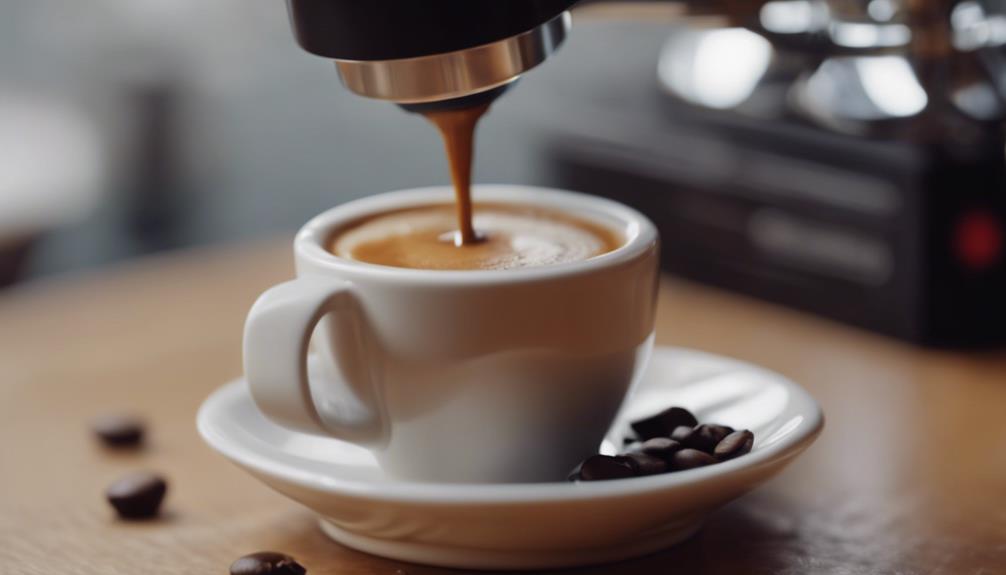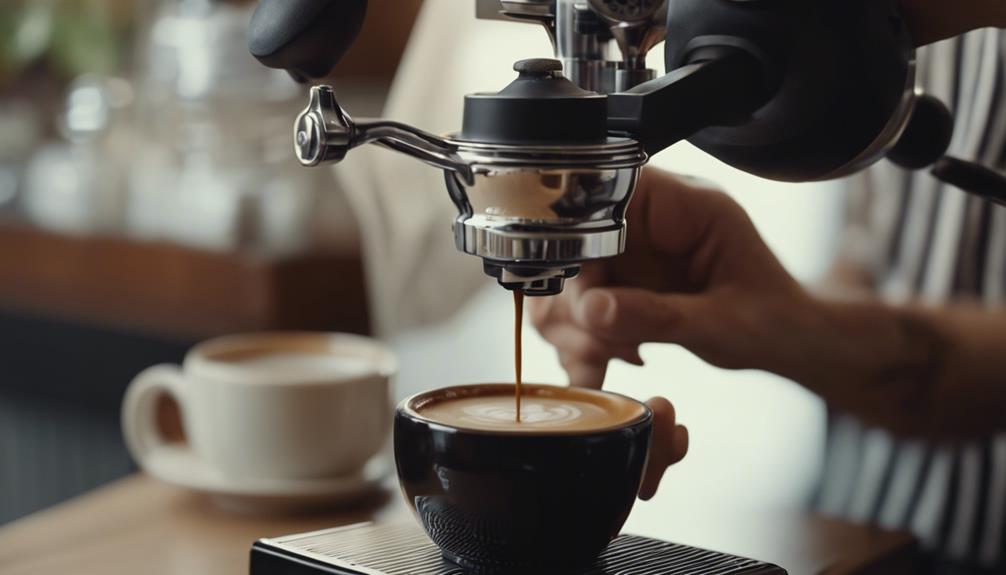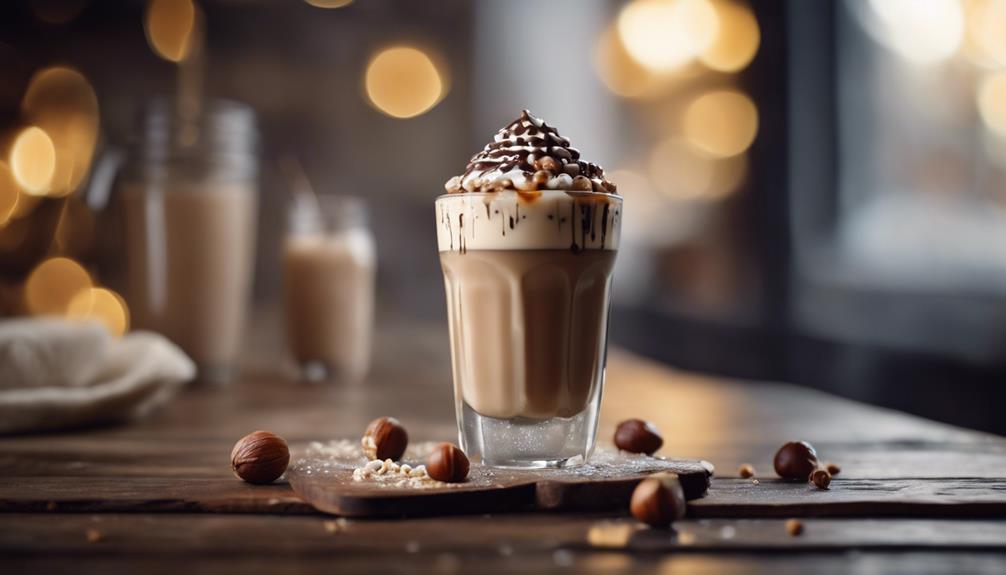In espresso, you have crema, body, and heart. Crema tops your espresso, made of proteins, sugars, and oils, enhancing flavor and aroma while balancing bitterness. The body, in the middle, holds concentrated oils, sugars, and solids, influenced by beans and roasting for texture. The heart, at the bottom, is dark, adding bitterness to sweetness and aroma, crafting a rich taste. Each part plays a vital role in your espresso’s depth and complexity, creating a harmonious balance of flavors. Understanding these three components gives you insight into the intricacies of a well-crafted espresso experience.
Key Takeaways
- Crema, the top layer, enhances aroma and flavor.
- Body, the middle layer, holds extracted flavors.
- Heart, at the bottom, adds depth and sweetness.
- Crema safeguards against bitterness.
- Body texture influenced by beans and roasting.
Crema
Exploring the essence of espresso, understanding the significance of crema is essential for appreciating the flavor nuances in your shot. The crema, that thin layer of golden-brown to brownish-red on top of your espresso, isn't just for looks. Composed of proteins, sugars, and vegetable oils, the crema plays an important role in enhancing the overall flavor profile of your shot. It's in the crema that you'll find the aromatic qualities that make each espresso unique.
During the extraction process, the crema acts as a safeguard against bitterness. When you see that whitish ring forming on top of the crema, it signals that the extraction is complete. Stopping the process at this point ensures that your shot maintains its balance of flavors.
A well-pulled espresso shot owes much of its visual appeal, flavor complexity, and overall quality to the presence of a rich, flavorful crema.
Body
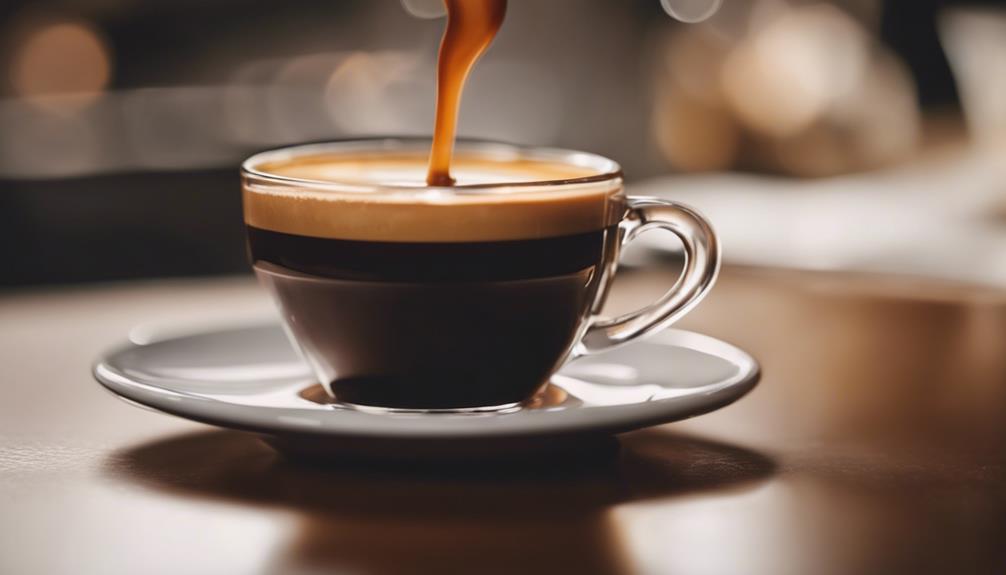
The body of an espresso shot, characterized by a caramel-brown color, plays an essential role in enhancing the overall flavor and texture of your brew. Here are three key aspects to understand about the body of an espresso shot:
- Middle Layer: The body forms the middle layer of an espresso shot, sandwiched between the crema on top and the heart at the bottom. This layer holds a substantial portion of the extracted flavors from the coffee beans.
- Espresso Extraction Process: During the espresso extraction process, the body is where most of the oils, sugars, and dissolved solids are concentrated. This concentration contributes to the rich and full-bodied characteristics of the espresso shot.
- Coffee Beans: The quality of the coffee beans and the roasting process significantly impact the body of the espresso shot. Different bean varieties and roasting profiles can lead to varying body textures, from light and tea-like to heavy and syrupy. Achieving the perfect body requires attention to detail in both bean selection and brewing techniques.
Heart
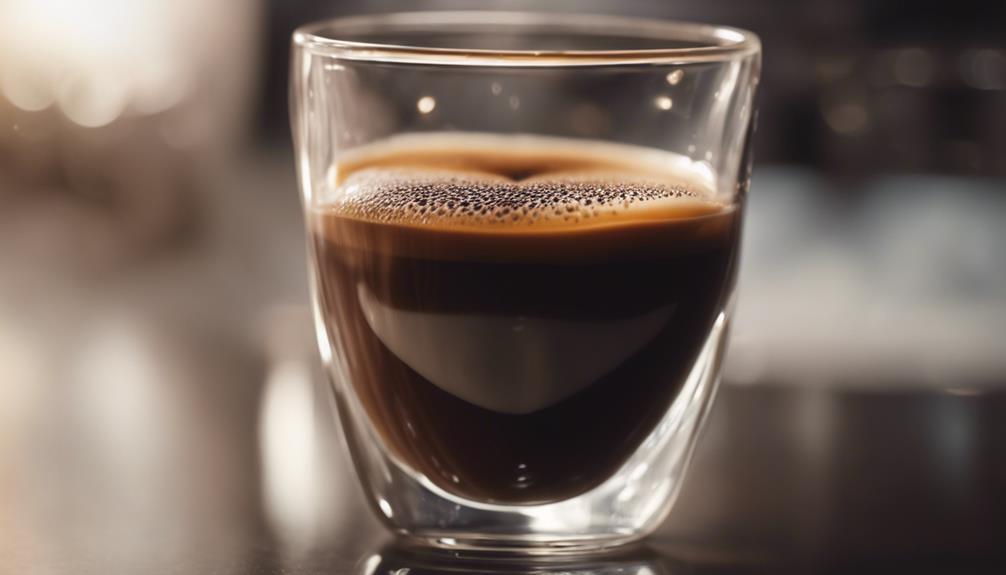
Understanding the heart of an espresso shot is vital to appreciating its foundational role in the overall flavor profile. This deep brown layer, found at the bottom of the shot, is a result of the high-pressure extraction process in the espresso machine. It holds the bitter qualities that complement the sweetness and aroma of the crema and body, creating a well-balanced taste experience.
The heart provides a strong base note, adding depth to the overall flavor profile and contributing to the full-bodied nature of the espresso shot. Baristas carefully extract this part of the shot to make sure that it enhances the overall quality of the espresso.
When finely ground coffee is subjected to high pressure during extraction, the heart emerges with its distinct characteristics, playing an essential role in achieving the perfect espresso shot. Mastering the extraction of the heart is crucial for creating a harmonious and flavorful espresso.
Frequently Asked Questions
What Are the Three Parts of Espresso?
The three parts of espresso, the crema, body, and heart, play essential roles in creating the shot's flavor and strength.
Crema, the top layer, holds the espresso's finest tastes and aromas.
The body, found in the middle layer, adds to the overall flavor and texture with its caramel-brown color.
Lastly, the heart, at the bottom, balances the shot with rich, bitter qualities.
Skilled baristas extract these layers through precise techniques for a well-balanced espresso shot.
What Are the Three Phases of Espresso?
In espresso, the three phases encompass the crema, body, and heart.
The crema tops the shot with a delicate foam, housing exquisite aromas.
Below lies the body, a caramel hue enriching the texture and taste.
Finally, the heart, at the base, boasts a deep brown tint, balancing bitterness with sweetness.
Understanding these layers guarantees a well-rounded, flavorful espresso experience, each phase playing an essential role in the shot's complexity.
What Are the Three Body of Espresso?
In espresso, the three parts refer to the crema, body, and heart.
The body of espresso is essential, residing between the crema and the heart. It showcases a rich caramel-brown color and holds most of the extracted flavors from the coffee grounds. This layer plays a vital role in the overall taste and texture of a well-pulled shot.
Understanding each part's role is key to crafting a perfectly balanced and flavorful espresso experience.
What Are the Three Layers of a Perfect Espresso Shot?
To achieve the perfect espresso shot, you must understand its three essential layers: the crema, body, and heart.
The crema tops the shot with a golden-brown foam, offering delicate flavors and aromas.
The body, in the middle, holds the majority of the shot's flavors, showcasing a caramel-brown color.
Finally, the heart at the bottom provides a strong and rich base note, balancing sweetness and aroma.
Mastering these layers requires precise extraction techniques and timing.
What are the different types of espresso and how are they made?
There are several different types of espresso, including ristretto, lungo, and doppio. Ristretto is made with a shorter extraction time, resulting in a stronger flavor. Lungo is made with a longer extraction time, producing a milder flavor. Doppio is simply a double shot of espresso. These espresso origins facts play a role in creating the unique taste of each type.
What Makes a Doppio Espresso Different from Regular Espresso?
A doppio espresso is known for its bold and strong flavor, making it distinct from a regular espresso. The uniqueness of doppio espresso lies in its double shot of espresso, providing a richer and more intense coffee experience. This extra dose of caffeine sets it apart from the standard single shot espresso.
Conclusion
Now you know the three key components of espresso: crema, body, and heart.
These elements work together to create the perfect cup of coffee, each contributing its own unique characteristics to the overall flavor profile.
So next time you take a sip of that rich, velvety espresso, remember to savor the complex interplay of crema, body, and heart that make it so delicious.
Enjoy your coffee with a newfound appreciation for its intricate composition.
